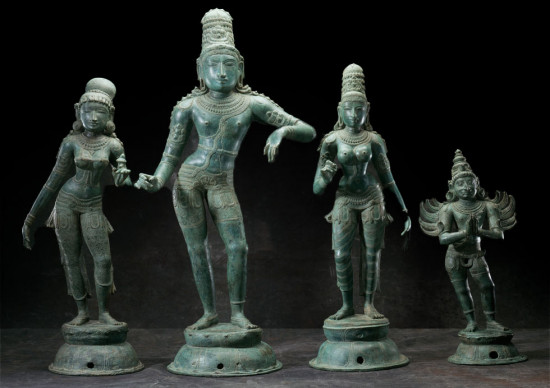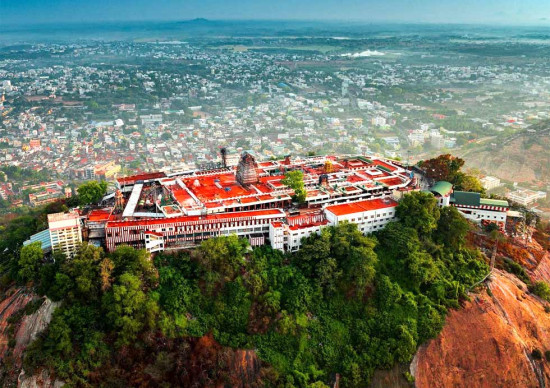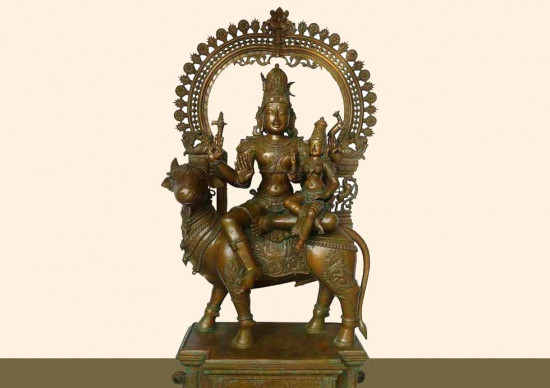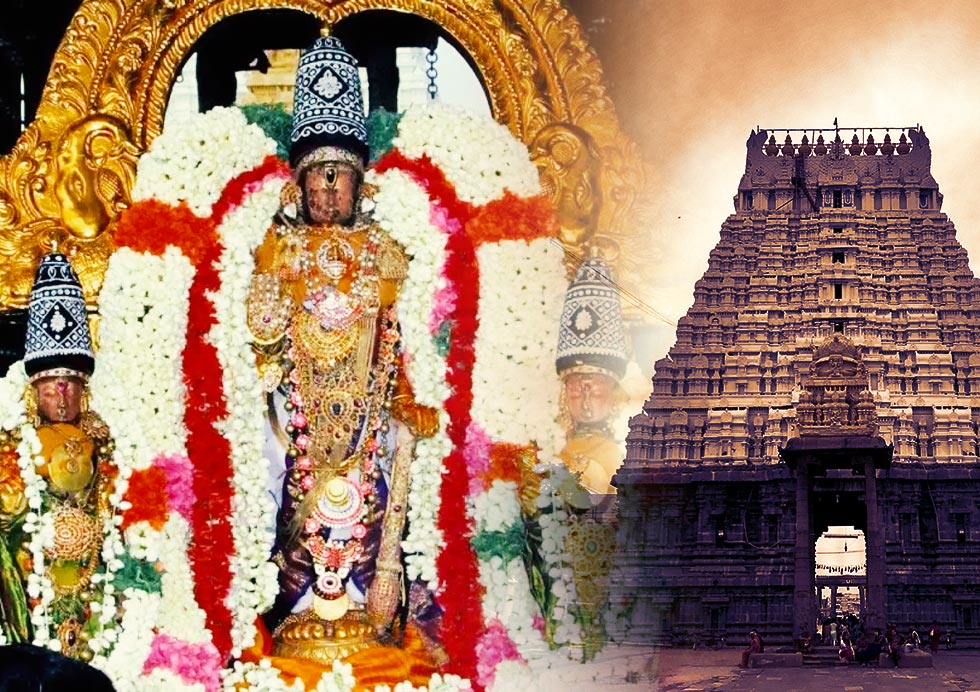
Deep in the heart of Kanchipuram, where ancient temple walls resonate with centuries of whispered prayers, dwells a deity revered for his grace and benevolence: Varadaraja Perumal. He is also known as Atthi Vardar, where atthi means fig. His majestic form, a captivating tableau of fig wood and legend, embodies not just spiritual power but the very essence of Tamil Nadu’s vibrant temple culture. Today, we embark on a journey to unveil the enigmatic beauty of this divine image, unraveling the layers of symbolism and myth that make him so unique.
A Forest-Born Majesty
Step within the opulent confines of the Varadaraja Perumal Temple, and your gaze is instantly drawn to the awe-inspiring figure standing tall in the sanctum sanctorum. Carved not from cold stone, but from the gentle luminescence of fig wood, he radiates a captivating serenity. His four arms, like branches reaching towards the heavens, represent his omnipotence. In each hand, he holds an iconic Vishnu emblem, each pulsating with meaning:
-The Sudarshana Chakra: A discus carved from pure light, representing the cyclical nature of existence, spinning endlessly through creation and dissolution.
-The Panchajanya Conch: A shell whispering tales of the primordial sound that birthed the universe, a resonant reminder of creation’s infinite song.
-The Padma Lotus: Blooming serenely at his feet, a symbol of purity and spiritual growth, its delicate petals echoing the unfolding of the human soul.
-The Kaustubha Mani: A wish-fulfilling jewel resplendent on his chest, radiating divine grace, a testament to the limitless compassion of the Lord.
-The Sudarshana Chakra: A discus carved from pure light, representing the cyclical nature of existence, spinning endlessly through creation and dissolution.
-The Panchajanya Conch: A shell whispering tales of the primordial sound that birthed the universe, a resonant reminder of creation’s infinite song.
-The Padma Lotus: Blooming serenely at his feet, a symbol of purity and spiritual growth, its delicate petals echoing the unfolding of the human soul.
-The Kaustubha Mani: A wish-fulfilling jewel resplendent on his chest, radiating divine grace, a testament to the limitless compassion of the Lord.
Adorned in royal attire, a gentle smile playing on his lips, Varadaraja Perumal exudes an air of regal elegance. His eyes, like pools of ancient wisdom, gaze down with compassion, seeming to hold the secrets of eons. The elaborate crown and ornaments adorning him, crafted from shimmering gold and precious stones, are not mere embellishments, but visual affirmations of his divine status as the king of gods.
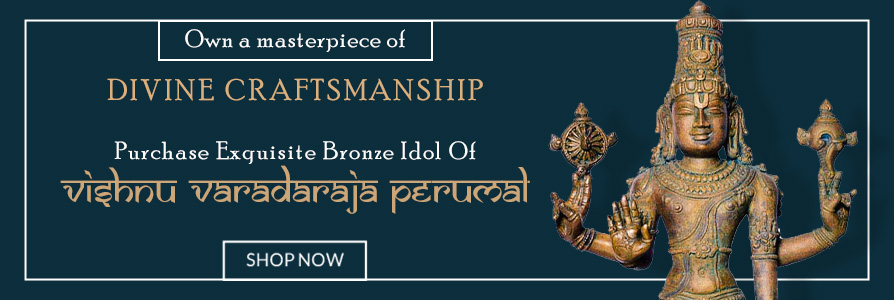
From Yagna to Sanctuary
Legend whispers of Lord Brahma’s desperate plea to witness Lord Vishnu’s divine form, with its four arms holding iconic emblems. Vishnu, pleased by Brahma’s devotion, instructed him to perform a powerful ritual, the Ashwamedha yagna. Brahma, realizing the monumental task ahead, sought Vishnu’s guidance. Vishnu, ever compassionate, suggested performing just one such yagna in the holy city of Kanchipuram, equating it to a hundred elsewhere.
As Brahma commenced the sacred ritual with his consorts, Goddess Saraswati, angered by his perceived neglect, took the form of the raging River Vegavathi to disrupt the proceedings. Brahma, in desperation, prayed to Vishnu for intervention. Vishnu, embodying his protective nature, assumed a sleeping posture, laying across the river’s path and calming its turbulent waters.
Deeply touched by Brahma’s dedication, Vishnu revealed himself in his divine form, granting him his wish to witness his true essence. Brahma, overwhelmed by this magnificent vision, commissioned the divine architect Vishwakarma to carve an idol capturing the essence of this experience. Vishwakarma, working with the wood of a sacred fig tree, meticulously crafted the figure we now know as Atthi Varadar.
But the story doesn’t end there. The intense heat generated by the ongoing yagna threatened to damage the newly carved idol. Vishnu, foreseeing this, instructed Brahma to immerse the idol in the temple’s water tank, where it remained protected and hidden for centuries.
Fast forward to a time of turmoil, during the Mughal invasion. Two dedicated dattatreya, temple custodians, fearing the idol’s destruction, secreted it away in an underground chamber within the water tank, keeping its location a closely guarded secret. With their passing, the knowledge of the hidden idol sadly vanished.
As Brahma commenced the sacred ritual with his consorts, Goddess Saraswati, angered by his perceived neglect, took the form of the raging River Vegavathi to disrupt the proceedings. Brahma, in desperation, prayed to Vishnu for intervention. Vishnu, embodying his protective nature, assumed a sleeping posture, laying across the river’s path and calming its turbulent waters.
Deeply touched by Brahma’s dedication, Vishnu revealed himself in his divine form, granting him his wish to witness his true essence. Brahma, overwhelmed by this magnificent vision, commissioned the divine architect Vishwakarma to carve an idol capturing the essence of this experience. Vishwakarma, working with the wood of a sacred fig tree, meticulously crafted the figure we now know as Atthi Varadar.
But the story doesn’t end there. The intense heat generated by the ongoing yagna threatened to damage the newly carved idol. Vishnu, foreseeing this, instructed Brahma to immerse the idol in the temple’s water tank, where it remained protected and hidden for centuries.
Fast forward to a time of turmoil, during the Mughal invasion. Two dedicated dattatreya, temple custodians, fearing the idol’s destruction, secreted it away in an underground chamber within the water tank, keeping its location a closely guarded secret. With their passing, the knowledge of the hidden idol sadly vanished.
For years, a different idol held the central position in the temple, unaware of the hidden treasure beneath the water’s surface. Then, during a routine temple cleaning, a remarkable discovery unfolded. The forgotten Atthi Varadar was found resting within a silver casket, preserved against the test of time.
A wave of joy and devotion swept through Kanchipuram. Following ancient protocols, the idol was placed on public display for 48 days, allowing countless devotees to bask in its divine presence. After this period of celebration, the idol was once again ceremoniously immersed in the water tank, where it remains hidden until the next cycle of 40 years.
This unique tradition, known as the Brahmotsavam festival, is a testament to the extraordinary story of Atthi Varadar. It’s a glimpse into the rich tapestry of myth, devotion, and cultural continuity that continues to pulsate within the heart of Kanchipuram.
A wave of joy and devotion swept through Kanchipuram. Following ancient protocols, the idol was placed on public display for 48 days, allowing countless devotees to bask in its divine presence. After this period of celebration, the idol was once again ceremoniously immersed in the water tank, where it remains hidden until the next cycle of 40 years.
This unique tradition, known as the Brahmotsavam festival, is a testament to the extraordinary story of Atthi Varadar. It’s a glimpse into the rich tapestry of myth, devotion, and cultural continuity that continues to pulsate within the heart of Kanchipuram.
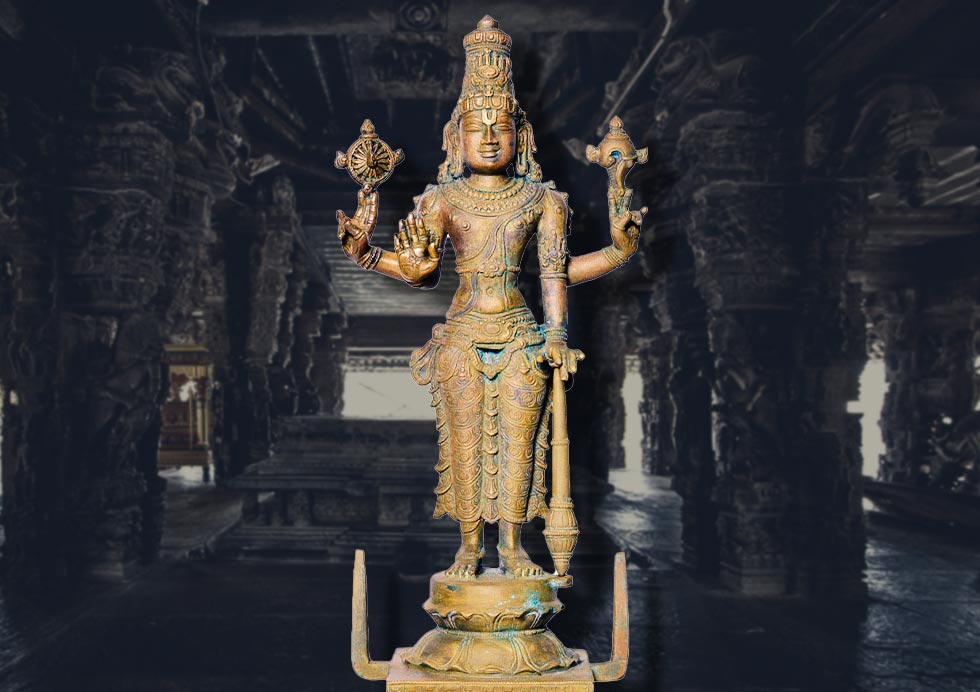
The Rhythm of Unveiling
Adding to the mystique, Varadaraja Perumal observes a unique tradition that sets him apart from most idols. He remains veiled for 40 long years, a hidden treasure protected within the temple’s inner sanctum. Then, every 40th year, with the rising of the Brahmotsavam festival, he emerges in a grand procession, a sight that sends a tremor of anticipation through the hearts of countless devotees. For 48 days, he graces the world with his presence, showering blessings and inspiration upon those fortunate enough to witness his unveiled glory.
The form of Varadaraja Perumal is not just a beautiful statue; it’s a window into the soul of Tamil Nadu’s temple culture. His legend and symbolism encapsulate the divine grace, wisdom, and cosmic power that continue to captivate hearts and minds for centuries. In him, we see the embodiment of compassion, the endless cycle of creation and dissolution, and the promise of divine intervention whenever we stumble on life’s journey. Visiting Kanchipuram and witnessing his form firsthand is not just a tourist’s indulgence; it’s an opportunity to connect with the essence of a timeless faith, to find solace in the wisdom etched in wood, and to experience the thrill of encountering the unveiled divine.
The form of Varadaraja Perumal is not just a beautiful statue; it’s a window into the soul of Tamil Nadu’s temple culture. His legend and symbolism encapsulate the divine grace, wisdom, and cosmic power that continue to captivate hearts and minds for centuries. In him, we see the embodiment of compassion, the endless cycle of creation and dissolution, and the promise of divine intervention whenever we stumble on life’s journey. Visiting Kanchipuram and witnessing his form firsthand is not just a tourist’s indulgence; it’s an opportunity to connect with the essence of a timeless faith, to find solace in the wisdom etched in wood, and to experience the thrill of encountering the unveiled divine.

